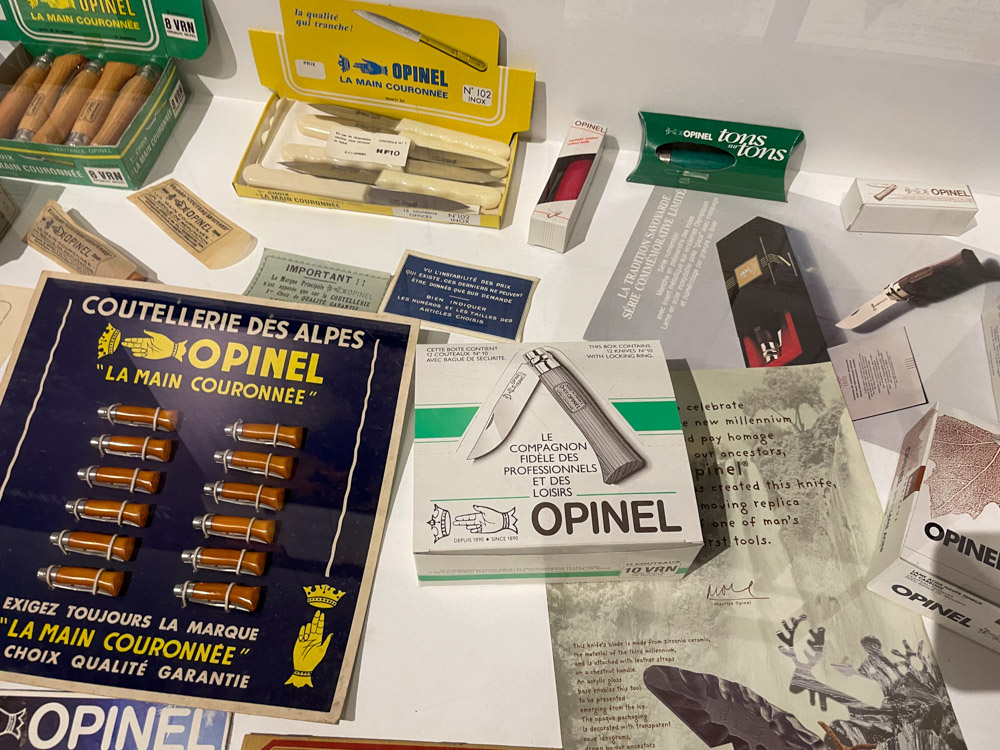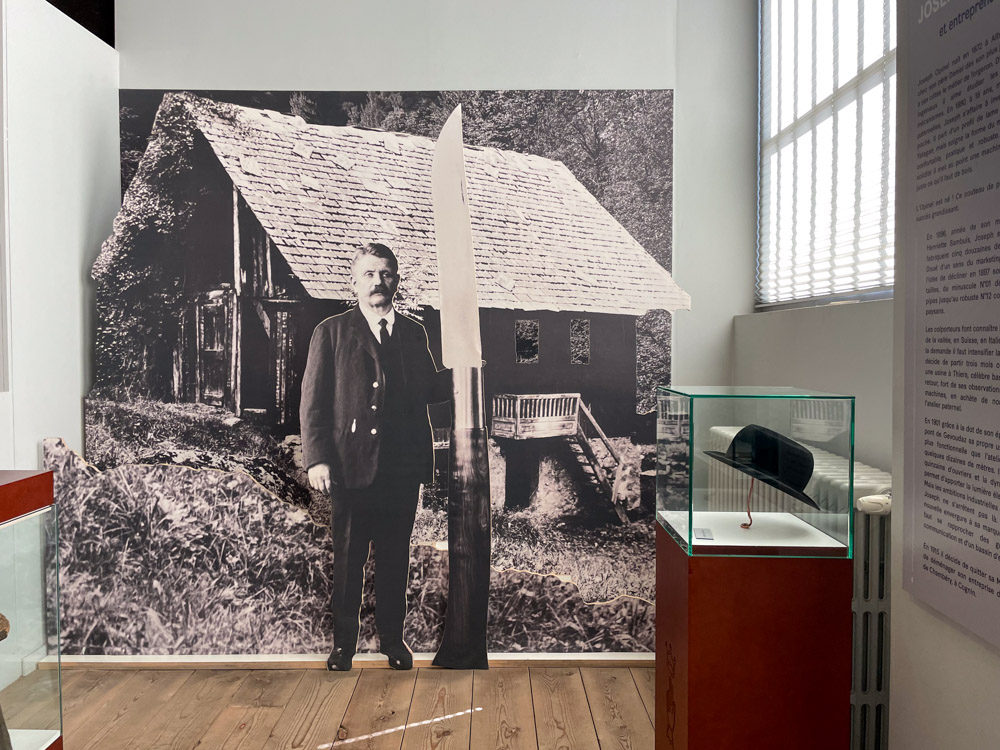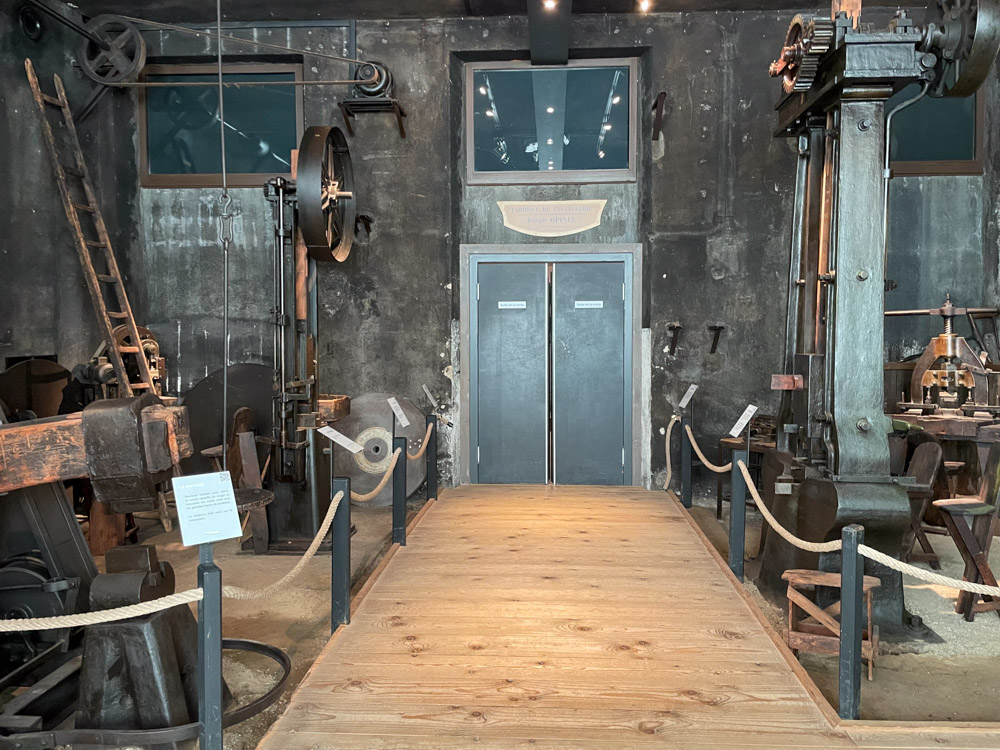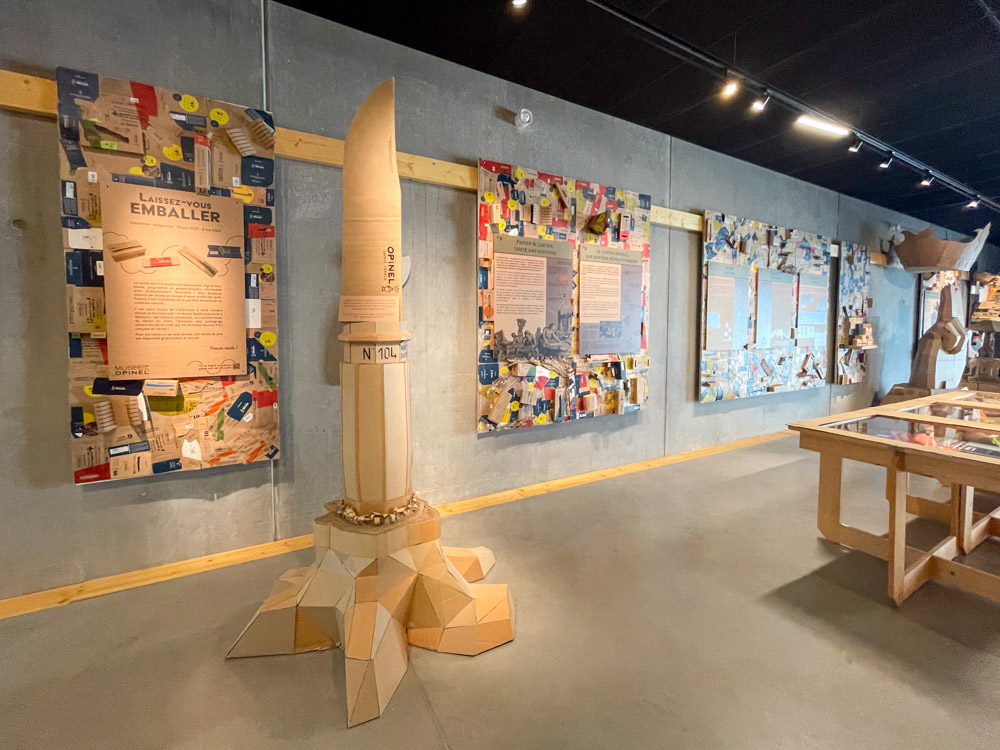The Opinel Museum in Saint-Jean-de-Maurienne is a must-visit when exploring the Savoie region. This museum tells the story of the iconic folding knife, invented by Joseph Opinel and crafted in the Maurienne valley for over 130 years. Here, you can learn about the brand’s history, its unique production methods, and patented design. The museum also showcases the complete collection of Opinel knives, which continue to be handmade locally, blending tradition with timeless craftsmanship.
Table of Contents
What You Should Know About the Opinel: The Iconic French Travel Pocket Knife
The Opinel folding knife is more than a tool; it’s woven into the very fabric of French culture. Larousse dictionary in 1989 defined it as “a folding knife featuring a wooden haft with a groove into which the blade folds”. Of course, the Opinel’s knives are immediately recognisable by their elegant wooden handle and clever blade-locking mechanism.
PLAN YOUR TRIP TO FRANCE
Stay connected with a Holafly eSIM during your trip to France and enjoy unlimited data, with fast reliable internet and no roaming charges.
Get Heymondo travel insurance to travel carefree and enjoy every moment of your adventure.
Invented in 1890 by Joseph Opinel in the Savoie region, this travel knife seamlessly blends form, function, and tradition. Its timeless design has endured virtually unchanged for over 130 years, earning global acclaim as a paragon of industrial elegance.
In 1985, the Victoria and Albert Museum in London named the Opinel folding knife one of the 100 best-designed objects in the world, alongside icons like the Porsche 911 and Rolex. Then, in 2006, it was featured among the 999 most perfect designs in Phaidon Design Classics.
A defining feature of the Opinel is the Virobloc rotating locking collar, introduced in 1955 by Joseph’s son, Marcel Opinel. Initially engineered to lock the blade open, by 2000, it also secured the blade closed for safe transport. This innovation marked a significant step in ensuring functionality without compromising the knife’s simplicity.
Over the years, Opinel has grown from a local craftsman’s creation to a multifaceted brand, with over 350 million knives sold across 71 countries. Today, the company encompasses robust kitchen collections like Les Essentiels and Les Forgés 1890, further cementing its reputation in premium cutlery.

A Family Legacy in the Heart of the French Alps
For the French, Opinel is much more than a simple folding knife. It embodies French tradition, design, and craftsmanship, captivating enthusiasts around the world.
Its artisanal story begins in the 1800s with Victor-Amédée Opinel. He opened his first blacksmith workshop in Gevoudaz, a hamlet near Saint-Jean-de-Maurienne in the Savoie region. His son Daniel continued the trade, becoming a respected maker of cutting tools.
In 1872, Daniel’s eldest son, Joseph Opinel, was born. Fascinated by new technologies, Joseph took a different path from his father. Using modern techniques, he created a small folding knife, despite his father’s initial scepticism. That modest invention marked the beginning of what would become a world-renowned brand.
By 1901, Joseph had built a new workshop at Pont de Gevoudaz to increase production. Embracing innovation, he equipped the factory with machinery and electric power. Pioneering a streamlined manufacturing process, he laid the foundations for the company’s long-term success.

The Expansion of Opinel’s Production
In 1911, Joseph Opinel presented his folding knife at the International Alpine Exhibition in Turin. There, it was awarded a gold medal. Just a few years later, in 1915, he relocated the company to Cognin, near Chambéry, to support its industrial growth.
Tragedy struck in 1926 when a fire destroyed the factory. Undeterred, the Opinel family chose to rebuild on the same site, opening a new, modern facility the following year. As demand continued to grow, a larger production site was constructed in the 1970s in La Revériaz. Since 2003, it has been the company’s main headquarters.
Today, Opinel is recognised as a global brand. Yet its strength lies in its deep roots, a tradition of excellence in craftsmanship that you can fully appreciate by visiting the Opinel Museum in Saint-Jean-de-Maurienne.
What to See at the Opinel Museum in Saint-Jean-de-Maurienne
Housed in a former Opinel factory, the Opinel Museum tells the century-long story of the iconic folding knife, from Savoie and the brand’s evolution since 1890. Inside the museum, you’ll discover the knife’s deep roots in both the Opinel family and the local Savoie region.
You’ll trace the development of production techniques and follow the company’s industrial and commercial growth over the years. The visit ends with a short film that explains the current manufacturing process, still partly artisanal.
Beyond the exhibition, the museum includes a welcoming café. Here you can enjoy what might be one of the best espressos in Savoie.
The building also houses a well-stocked shop showcasing the full range of Opinel knives, including kitchen knives and exclusive models. Some knives can even be personalised on the spot. We picked up a classic No. 8 folding knife. Although we didn’t have the patience to wait in the queue for the engraving!

The Permanent Exhibition: Discovering the Story of the Opinel Brand
The permanent exhibition at the Opinel Museum in Saint-Jean-de-Maurienne takes you on a fascinating journey through the history of this iconic family-run company. Spread across various sections, the museum showcases how a simple folding knife became a timeless symbol of French design and craftsmanship.
One of the highlights is the extensive collection of Opinel knives, where you can admire the full range of models and see how these wooden-handled folding knives have evolved over the decades. From the earliest designs to the latest innovations, you’ll appreciate the meticulous attention to detail and artisanal quality that make Opinel knives so distinctive.
The exhibition also offers insight into the diversity of handle shapes, blade materials, and finishes, helping you find inspiration for choosing the perfect Opinel knife. Perhaps you can even pick one up at the museum shop after your visit.
As you explore the museum, you’ll also discover the brand’s deep family roots and strong ties to the Savoie region, which have shaped its identity over time. While Opinel now uses modern machinery and production methods, it’s striking to see how the final touches are still done by hand. This tradition ensures each knife retains its uniqueness and exceptional quality, ready to be passed down through generations.

La Main Couronnée: The Iconic Opinel Logo of the Crowned Hand
In 1565, King Charles IX of France decreed that all master cutlers must stamp a unique emblem onto their creations. Honouring this centuries-old tradition, Joseph Opinel adopted his own symbol in 1909. This symbol is La Main Couronnée, the Crowned Hand.
Still used today, this distinctive mark is stamped onto every Opinel blade as a sign of authenticity and quality. More than just a logo, La Main Couronnée represents Opinel’s enduring commitment to craftsmanship and tradition.
Each blade bearing this emblem reflects the meticulous care and attention to detail that define the Opinel brand, a legacy proudly carried forward for over 130 years.
The Patents Behind the Uniqueness of the Opinel Folding Knife
Opinel is a symbol of tradition and innovation. In 1955, Marcel Opinel introduced the patented Virobloc safety ring, a rotating collar designed to lock the blade in the open position and significantly improve user safety. This clever mechanism quickly became one of the most recognisable features of the Opinel knife.
During the 1990s, additional improvements allowed the blade to be locked in the closed position as well. In 2000, the system was refined once more to ensure even greater safety during transport.
Thanks to the Virobloc system, you can use your Opinel knife with complete peace of mind, whether you are off on a camping adventure or simply tackling everyday tasks. It combines practicality, elegant design and reliable safety in one timeless tool.
Temporary Exhibitions: When Opinel Meets Contemporary Artists
Every summer, the Opinel Museum hosts a new temporary exhibition with a historical or artistic theme. These displays offer a unique opportunity to explore lesser-known aspects of the Opinel world. During our visit, we had the pleasure of discovering Opinel ça Cartonne, a free exhibition open to all during regular museum hours.
This creative exhibition focused on cardboard, a versatile, customisable, reusable and recyclable material. Alongside the evolution of Opinel’s packaging, the display featured genuine works of art made from cardboard, including a pair of roller skates and a nearly two-metre-tall folding knife.
For those interested in the technical side, we learned that corrugated cardboard was patented in the United Kingdom in 1856. It represented a true revolution in the packaging industry by providing better protection for fragile items during transport. Industrial production developed rapidly, and by 1914 the first machine capable of manufacturing corrugated cardboard boxes autonomously had been introduced in France.
Beyond its practical uses, cardboard has also become a medium for contemporary art. A particularly fascinating example was the work of the artistic duo STUD, formed by Stan and Tud, who created beautiful cardboard objects featured in the exhibition.

Practical Tips for Visiting the Opinel Museum in Saint-Jean-de-Maurienne
The Opinel Museum in Saint-Jean-de-Maurienne is a must-visit for anyone with a passion for history, design and craftsmanship. Located right in the heart of town, the museum offers a comprehensive overview of the famous Opinel knife and its evolution over the years.
Saint-Jean-de-Maurienne is a charming little town, but if you’re travelling by car, you can easily stop just for the museum and continue your journey to other parts of Savoie. It also makes an ideal stopover if you’re heading towards Chambéry.
We visited the Opinel Museum during our campervan trip across Europe, just before heading to the bat cave at La Balme-les-Grottes. However, it is also easily accessible by car or train, making it a convenient cultural stop on any itinerary through the French Alps.
Opening Hours of the Opinel Museum
The Opinel Museum in Saint-Jean-de-Maurienne is open all year round. During the low season, from January to June and September to December, the museum is open every day except Sundays and public holidays.
In the summer months of July and August, the museum welcomes visitors seven days a week, including public holidays. Opening hours are from 9:00 am to 6:30 pm with no breaks, and the last admission is 30 minutes before closing time.
How to Get to the Opinel Museum
Located in the historic centre of Saint-Jean-de-Maurienne, the Opinel Museum is just a 10-minute walk from the train station. There are direct trains from both Turin and Lyon. Other cities are also well connected by rail, although you might need to change trains.
The museum is also easily accessible by car. On the A43 motorway from Chambéry towards the Maurienne valley, take exit 27 for Saint-Jean-de-Maurienne. If you are travelling from Italy into the Maurienne, take exit 28 at Saint-Julien-Montdenis.
From the motorway, the museum and town centre are well signposted. Alternatively, Google Maps can guide you along toll-free national roads for a more scenic or economical route.
The Opinel Museum offers free parking for visitors. However, during busy periods, spaces may be limited. A large public car park is available in the main square of Saint-Jean-de-Maurienne, just a few minutes’ walk away. Be aware that the square may be closed during events or festivals, in which case you will need to park along the main road.
Musée Opinel (Opinel Museum)
25, Rue Jean Jaurès
73300 Saint-Jean-de-Maurienne
The Opinel Museum in Saint-Jean-de-Maurienne is a must-visit for anyone who loves design and craftsmanship. Your visit offers the chance to explore the fascinating history of the Opinel brand, discover the production processes, and admire the extensive collection of iconic knife models.
Let me know in the comments if you already knew about the Opinel Museum or if this article has inspired you to visit it.
